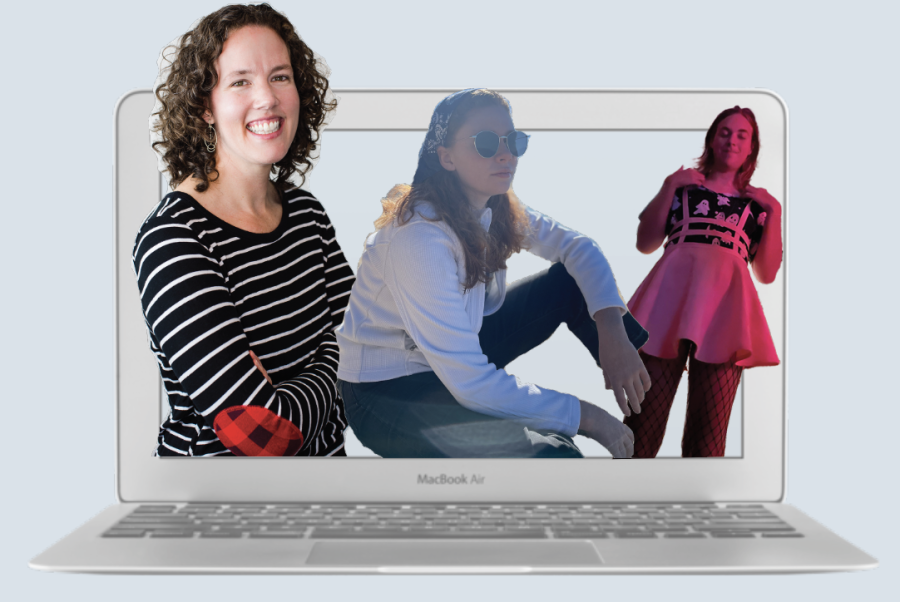Finding community in the cyberspace
The internet is seen as both a safe-haven and a dangerous place. Despite the threat of catfishers, porn messaging bots and doxxers who leak IP addresses, people still look to online spaces to find communities where they feel they belong, including students at Urban.
A study from DoubleVerify, an organization that studies online advertising, shows that before 2020 the average global internet content consumption was three hours per day. With the introduction of lockdowns due to the COVID-19 pandemic, people spent more time online, and this number rose to become just under seven hours. Regardless of this large increase in online usage during the pandemic, members of the Urban community had already been online for quite some time.
“The highest [point I was online] was probably the year before quarantine, [now] I’m in a bunch of discord servers,” said Alex Lepyansky ‘24. “[The] first time I joined one was [in] about sixth grade.” Lepyansky built up several friendships through those online chatting servers. “I joined a couple of communities…centered around YouTubers or a show…then quarantine happened which has led to even more time to talk.”
It isn’t always teenagers who are a part of online communities. “I’m involved in a bunch of communities online, like a Facebook group for cooking and families,” said Urban School Math Teacher, Laura Hawkins. “I’m also in the math education community on Twitter….It’s definitely, like, adults.”
Similarly to Lepyansky, Hawkins has made connections through these online communities. “There’s definitely people who I have gotten to know over…15 years on…Math Twitter. We followed each other and now I’m friends with them on Facebook,” said Hawkins.
In addition to the positive, Lepyanksy has also had negative experiences online. “I’ve talked to people that weren’t very nice, and I’ve gotten close with people that then turned around and stabbed me in the back,” he said. “Even if you… are trying your best to be as safe as possible online, [it can] still go wrong.” However, these experiences were minimal. “[Bad experiences] have been there, but just as much in my physical, non-online world,” Lepyansky said.
Online communities can open up a whole new world of dangers, but they also create an opportunity to meet people of different backgrounds and learn more about other people’s experiences. “One of the things that I really value about [Math Twitter] is…being able to see into other communities. I like how my math-ed community overlaps with social justice Twitter,” said Hawkins. “I follow a lot of educators of color and Black educators and Queer, Trans educators to make sure that I am considering different perspectives…to broaden my own work.”
Communities on social media also have a lot more accessible information surrounding identity. “I remember coming across an Instagram post about ADHD, and before, I didn’t realize that it really existed,” said Keira Darling ‘24. “I was like, ‘Oh my God, this is so informative and I really relate to it!’ After that, I went down a little rabbit hole.”
Darling also mentions the benefits of TikTok and Instagram communities dedicated to identity. “It helped me learn about myself and how my ADHD works and it helped me manage my [sensory issues], which was good for me, especially last year when I was starting high school,” she said.
For some, being online eliminates a lot of the awkwardness of socializing with others, making it easier to develop social skills. “I learned how to interact with people from being online… which is weird because you wouldn’t think that I would learn social cues and skills from someone I can’t physically speak to,” said Philo Judson ’22.
Lepyansky’s online experience shifted due to his increased use of online platforms during quarantine. “We had time to do things other than just talk, like, we played games together. So I definitely developed [stronger] connections that…I didn’t know how to form in person,” he said. Lepyanksy also struggled with social skills pre-pandemic. “I found it really hard to make friends…being online during quarantine definitely helped me.”
Similarly, Judson said, “During COVID, you couldn’t see anyone, [so] I felt really connected…to my friends again.” Judson spent more time interacting with friends online at home, in front of their parents. “The internet’s wild. Both of my parents are in their 60s and it’s so interesting to see both of them go through the process of understanding [that] you’re talking to real people that you actually know,” said Judson.
“A misconception [about online communities] is the same as social media in general…[that] there’s nothing good about it. But that’s just really not true,” said Darling. She added, “There’s a lot of problems with social media, but it’s not going away, so we might as well reap the benefits.”












